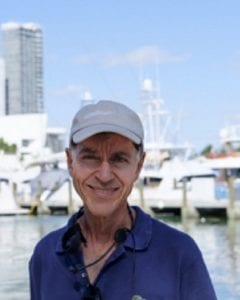|
Getting your Trinity Audio player ready...
|

In our previous column, we explored the enticements presented to Henry M. Flagler to extend his railroad from West Palm Beach to the Miami River, with the concomitant prospect of opening the area to development. While the offer of choice land on the north bank of the Miami River by Julia Tuttle is known to many who have followed this story, what is less evident were the contributions of the land-rich Brickells, who donated hundreds of acres of prime land on the south bank of the river to the railroad baron in return for his constructing a bridge across the stream and for his assistance in developing that side of the river in much the manner he was assisting with the development of the north bank. Further, the Brickells gifted one hundred acres of land on the New River, an area corresponding today to the western portion of downtown Fort Lauderdale, to the Flagler organization.
Rumors that Flagler would be extending his rail line south to the Miami River prompted heightened real estate activity in the Biscayne Bay area. Finally, in June 1895, the subject of the railroad’s extension advanced from the rumor to the reality stage when Jacksonville’s Florida Times-Union announced the news of the rail line’s extension. The following day contractor F. M. Cabott, assisted by a large group of laborers, began grading the land for the future right of way by removing trees and bushes in a 100 feet wide swath while smoothing over all uneven portions of the terrain, thereby paving the way for the next step in the rail’s extension: the laying of the tracks.
The right-of-way for the rail was located on land granted by the state of Florida. At the same time, the Flagler interests were building the Florida East Coast Canal, under the auspices of the Florida Coast Line Canal & Transportation Company, a company of which Flagler was an investor and its president. Moving in piecemeal fashion down the state, the canal was completed and becoming navigable between West Palm Beach and New River in August 1895. Construction of the next phase of the canal, linking Fort Lauderdale to Biscayne Bay, commenced.
In the following month, September 1895, the Flagler organization began laying the train tracks. The cross ties measured seven inches by nine feet and were laid 2,800 to a mile. News of possible work with the expanding railroad as well as in the new communities arising from the expansion attracted many men to southeast Florida who were hoping to “start over.” This was the case in 1895, as settlers began pouring into the “freeze proof” areas of this region, specifically Linton, today’s Delray Beach, and Fort Lauderdale. Typically, the men would arrive ahead of their families to prepare a home before sending for them.
Many of the railroad builders employed by the Flagler organization were African Americans who had been incarcerated and who were working through the state’s notorious convict lease program, common to many Southern states, which provided for the lease of prisoners to private employers for labor intensive work. For this work, employers paid an annual fee to the state. In many instances employers were abusive, prompting the state to end this program in 1923.
In October 24, 1895, the agreement, which has come down through history as Miami’s “birth certificate,” was drawn up. It is interesting to note that the place name, “Fort Dallas,” was used alongside of “Miami” to describe the area that would soon be developed. A typed document, the contract set forth the items previously agreed upon by Flagler and Tuttle. Already, Flagler surveyor, A. L. Knowlton, was in Miami surveying the area as a prelude to platting the town site of Miami.
In the next installment of this history column, we will examine the days, weeks and months leading up to the railroad’s entry into Miami in April 1896, and the parallel effort to carve a city, Miami, out of the wilderness.
Paul S. George, Ph.D., serves as Resident Historian, HistoryMiami Museum. He conducts history tours throughout the County and even beyond for HistoryMiami. Additionally, he teaches classes in Miami/S. Florida and Florida history for the Museum. Dr. George has also led, since 2002, tours of Little Havana as part of Viernes Culturales, a monthly celebration, every third Friday, of the culture and history of that quarter. The tours are open to all and are free!





